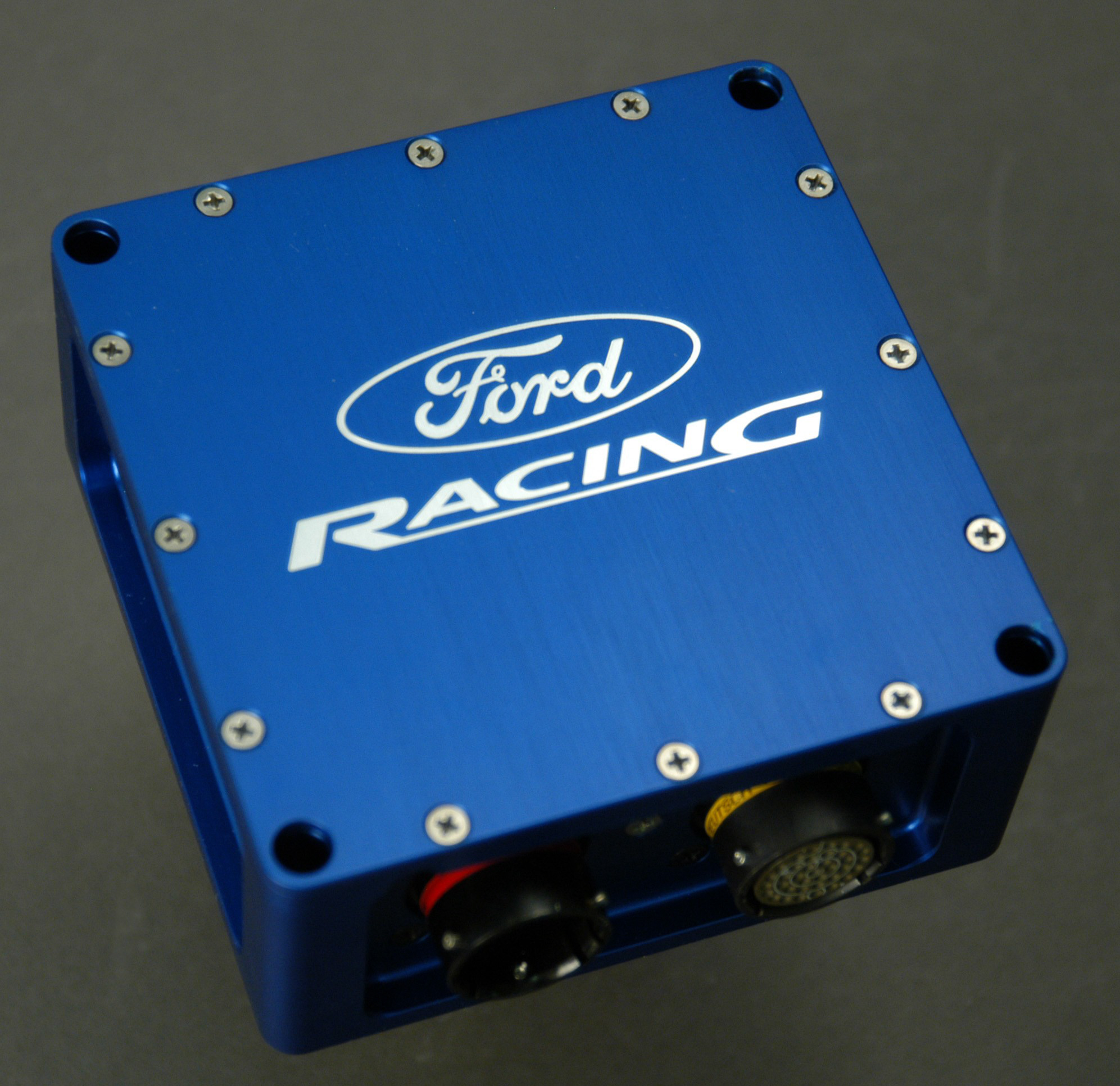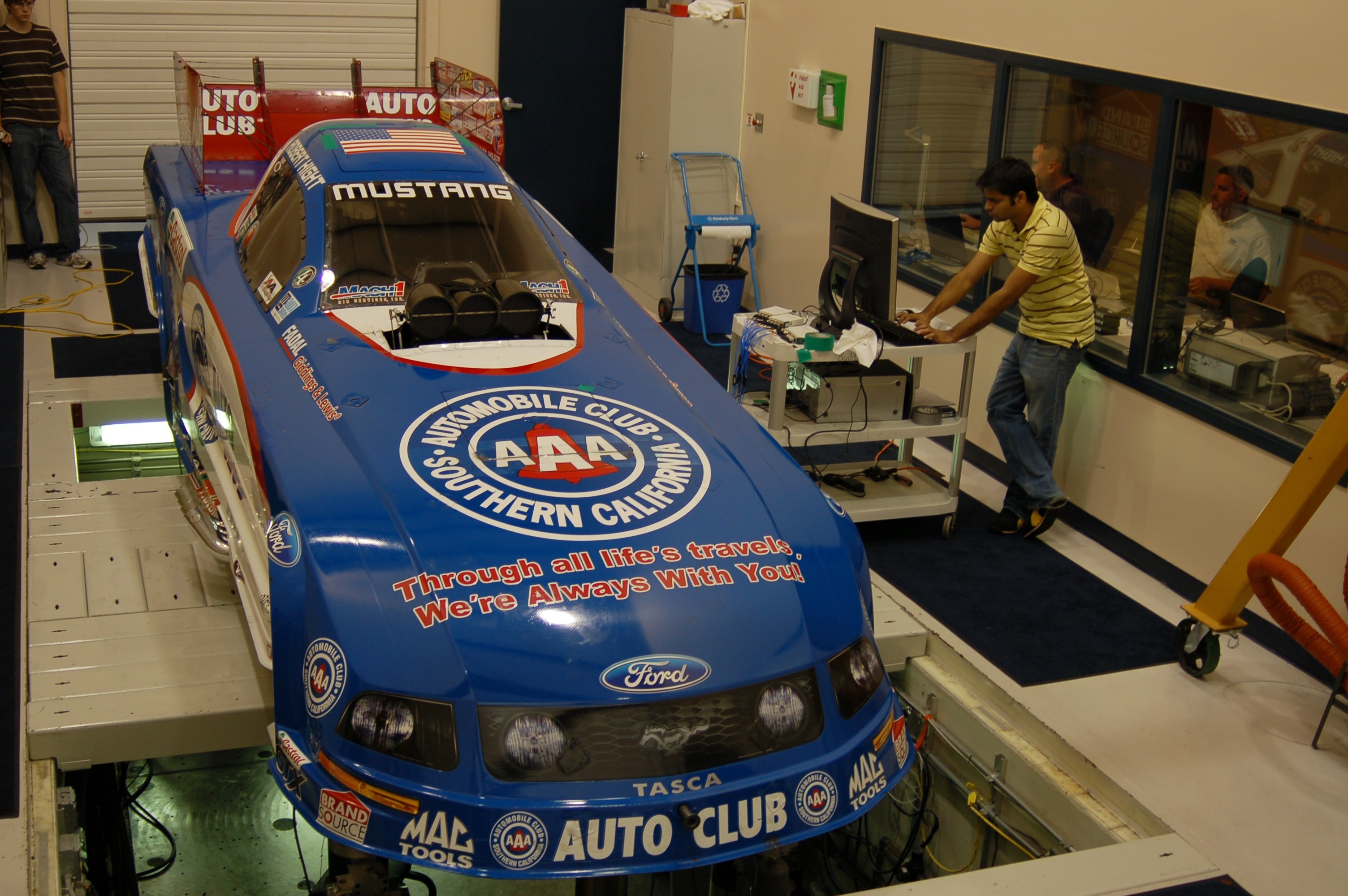FORD AND NHRA TEAM UP ON SAFETY
You’ll never guess who’s a new member at Ford’s media site? MyRideisMe! We’ll keep an eye on what’s happening with the performance cars and racing action over at the Ford site and post it here so you won’t have to look around.
This first story hits close to home for me. When Eric Medlen died I had trouble watching drag racing. I’ve always liked John Force so I cheered for his teammates as well. Eric just seemed like a good guy from watching him in interviews too. That whole incident hit me hard.The John Force Racing team reaction was over the top. They’ve re-examined EVERYTHING about safety in their funny cars and is doing the right thing by sharing all of the data with the NHRA and the other racing teams. The latest step is illustrated in this story from Ford Media. At Force’s request (I’ll bet) Ford’s doing the in depth engineering study needed to make sure these 7000 HP monsters are as safe as they can be. Great work guys!
Courtesy of Ford’s Media:
DEARBORN, Mich. – Accelerating safety development in the sport of drag racing, the NHRA and Ford Racing jointly announced today that all cars in the Funny Car and Top Fuel classes will be outfitted with the Ford Racing “Blue Box” crash sensors for the 2008 season.
“Ford, like the NHRA, is committed to continuously improving safety. It’s important to further improving our passenger cars and trucks and also to what we’re doing in racing,” said Dan Davis, director of Ford Racing Technology. “We’re supplying Blue Boxes – at no cost – for all nitro cars for next year. It’s the right thing to do for the sport and the millions of customers who will benefit from whatever we learn on the track.”
The announcement comes after seven months of initial testing and data analysis of the Blue Boxes on the Mustang Funny Cars of John Force Racing (JFR).
Ford Racing offered the crash sensors and engineering support for their use after the death of JFR driver Eric Medlen in a testing accident in March, which led JFR, in cooperation with Ford Racing, NHRA and the sport’s suppliers, in August to launch “The Eric Medlen Project,” a wide-ranging program designed to further improve safety in the sport.
Ford Racing and NHRA will work together during the next several weeks and prior to the start of the 2008 POWERade Drag Racing season on specific program elements.
 “NHRA has, since its inception, always been committed to improve safety in the sport,” said Graham Light, senior vice president of racing operations. “And, during that time, NHRA has worked on an ongoing basis with manufacturers and the racing community to enhance the safety of these vehicles. We are very proud of our safety record, given the inherent risks in the sport, and look forward to analyzing the data we anticipate to receive from the Blue Box initiative to further our commitment to safety.”
“NHRA has, since its inception, always been committed to improve safety in the sport,” said Graham Light, senior vice president of racing operations. “And, during that time, NHRA has worked on an ongoing basis with manufacturers and the racing community to enhance the safety of these vehicles. We are very proud of our safety record, given the inherent risks in the sport, and look forward to analyzing the data we anticipate to receive from the Blue Box initiative to further our commitment to safety.”
In addition to initial testing on the Force Mustangs, the Blue Boxes were tested for the final two races of the 2007 season on the Top Fuel dragster of Larry Dixon, to start a prove-out process on that class of vehicle.
This marks the second time in recent years Ford Racing has stepped to the forefront in safety development in racing. From 1996-2006, Ford Blue Boxes were mandatory on all cars in the Champ Car World Series.
In the Champ Car program, Ford’s Safety Research & Development group analyzed the raw crash data, along with the supporting medical reports, photographs, and video.
Ford then developed a CAE model of the driver inside a racecar cockpit to recreate the accident through computer simulation. The purpose of the research was to predict responses and injury potentials to the drivers in high “g-force” impacts.
(CAE stands for Computer Aided Engineering, it often means some high-tech software was used for simulation by Finite Element Analysis. It’s pretty common now because it’s alot cheaper than crashing cars! Here’s an example of what a CAE model looks like for the funny car. Click on the thumbnail to the left)
The results were then compared with the actual response and physical condition of the driver from the medical reports. Based upon the research, Ford evaluated the effectiveness of contemporary safety devices used in the cars, and communicated the research with Champ Car and its chassis suppliers.
“This work has great potential because it provides information we simply can’t get anywhere else,” said Davis. “That’s why we’re so committed to doing the same type of program for NHRA. The experience we gained in Champ Car gave us an excellent baseline to work from. It helped us correlate the crash models our engineers and safety experts had been working with.”
 During the first seven months of the latest initiative, Ford’s safety effort has focused in on four main areas:
During the first seven months of the latest initiative, Ford’s safety effort has focused in on four main areas:
- Data collection through the Ford Blue Boxes and accelerometers in the drivers’ ears
- Helmet and driver restraint testing
- Computer modeling of the current chassis, as well as seven-post shaker testing
- Occupant modeling of the driver cockpit area
Initial changes already made by Ford Racing, based on the data collected, have included the addition of extra head padding in the driver’s cockpit, and several changes to the chassis that helped strengthen it during the 300 mph runs.
Those changes have been tested several times during on-track incidents this season, including a crash in Dallas by John Force that left him with serious injuries on his extremities, but no head or internal injuries.
“It’s important to note that these are just first steps in what we hope will be a long-term effort toward making drag racing an even safer sport,” said Davis. “Having the Blue Boxes on all cars in Top Fuel and Funny Car will allow us to gather more data in a shorter period of time, so that everyone in the sport can use it to benefit all of the competitors.”
Care to comment? Let us know you miss Eric Medlen, too. And while you’re here, please JOIN MyRideisMe.com









ARE THE JFR TEAMS USING THE NEW FORD NITRO 500 ENGINE OR ARE STILL USING THE HEMI
Since the John Force Racing team developed the Boss 500 nitro motor, I’m sure they’re using it. As for Tasca, not sure… I guess they would.